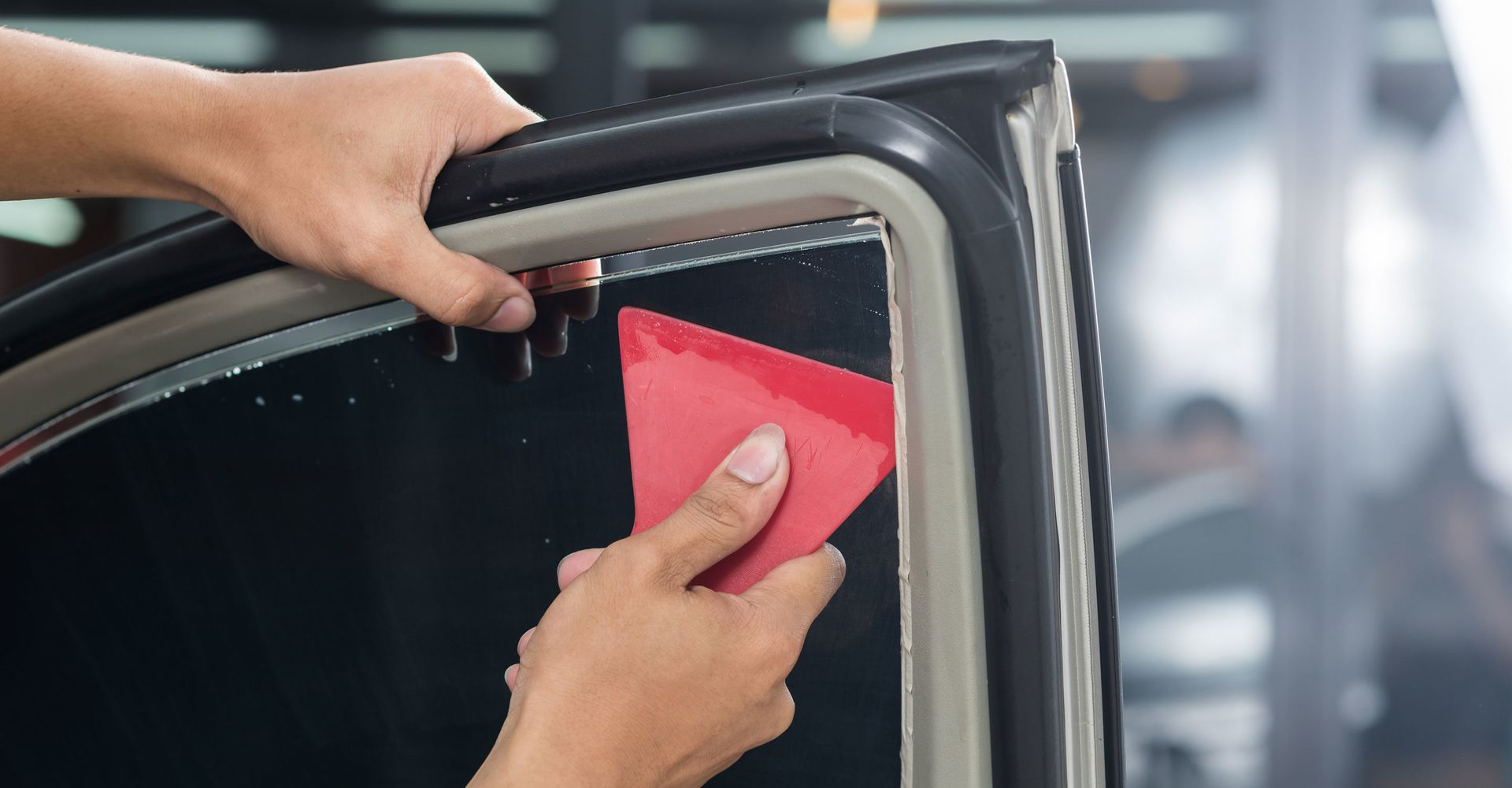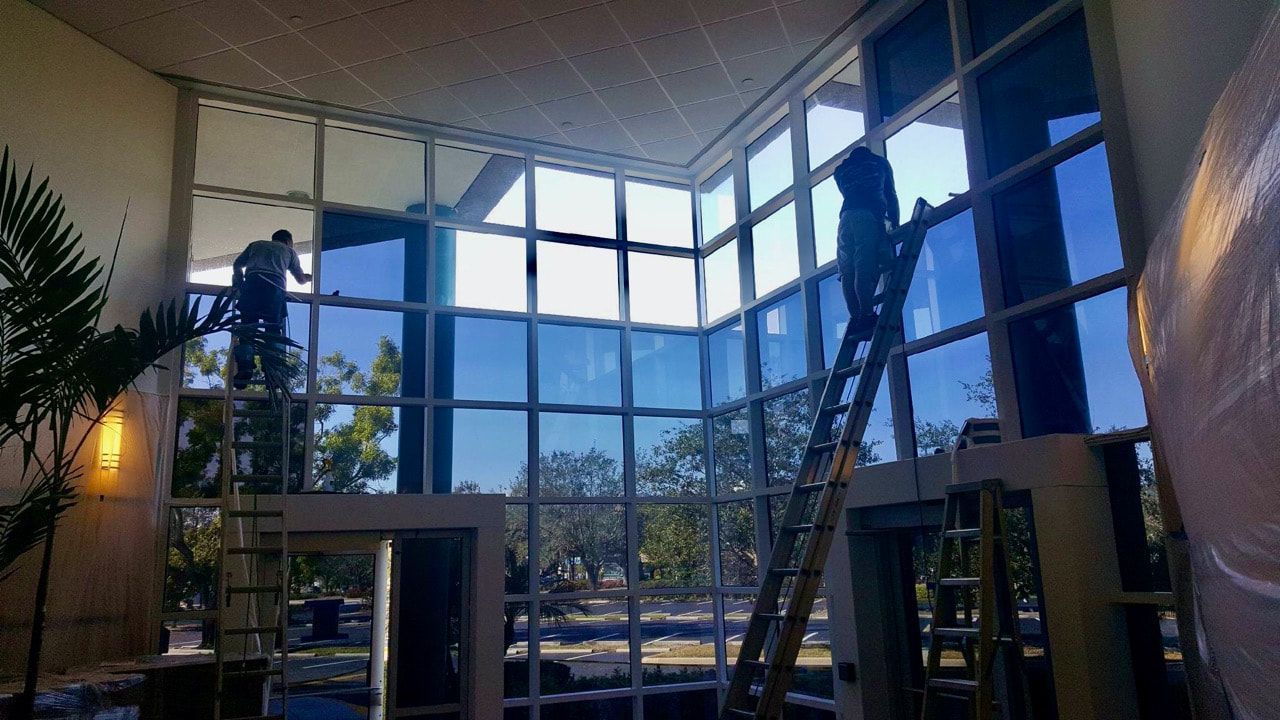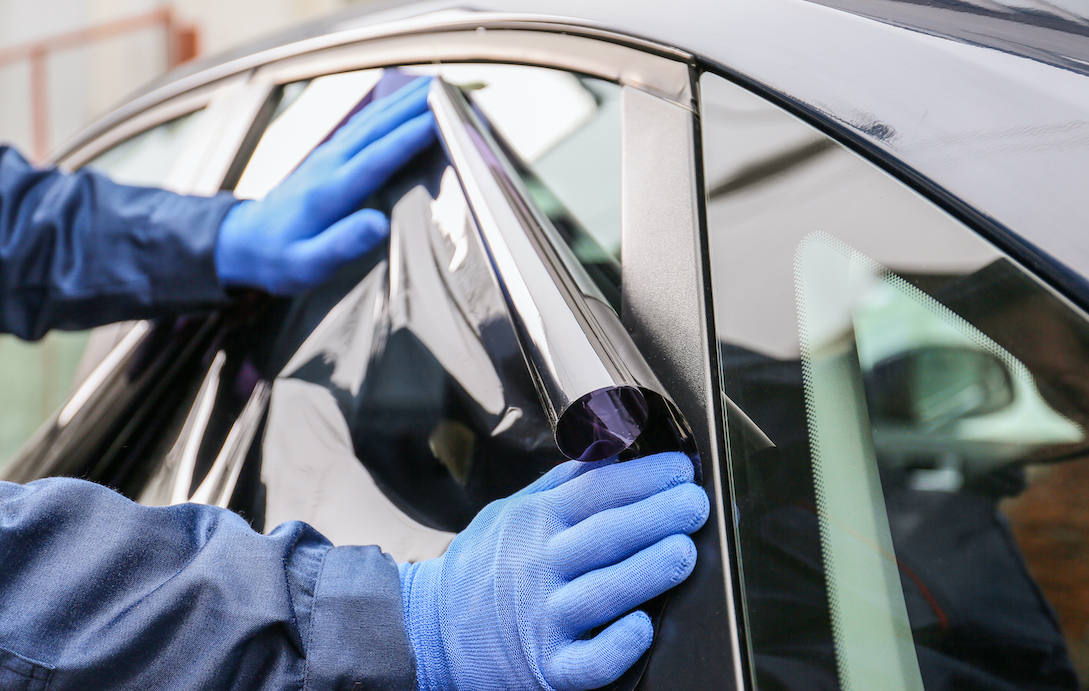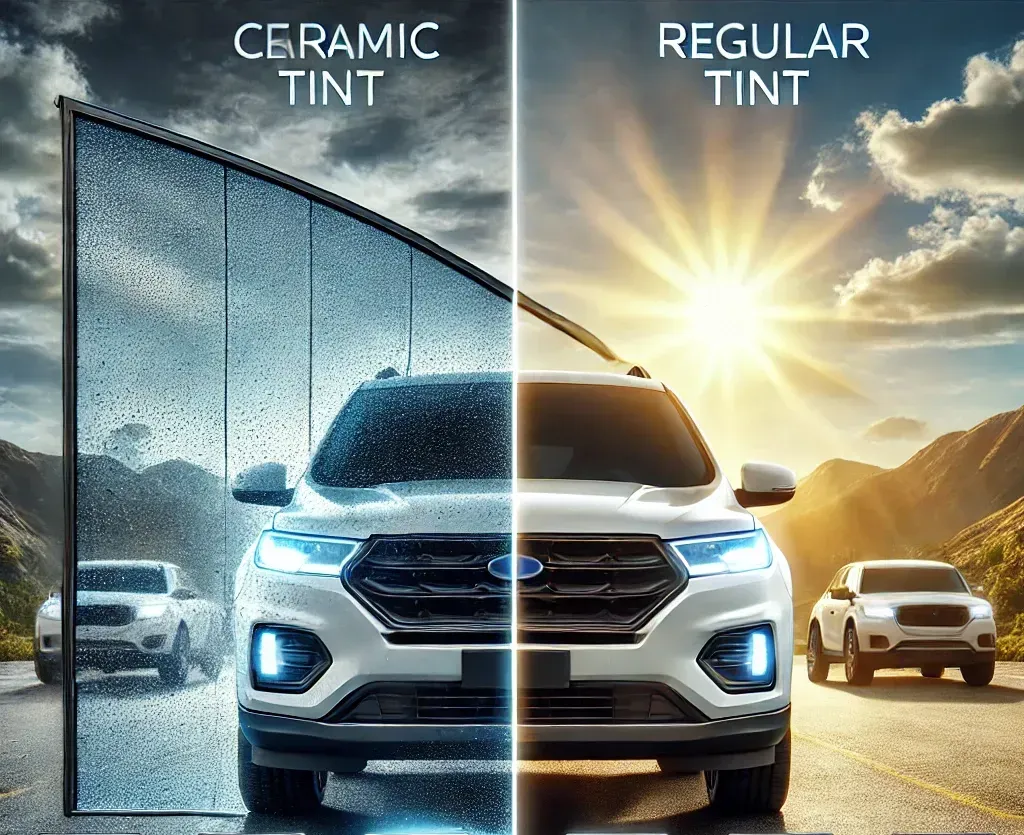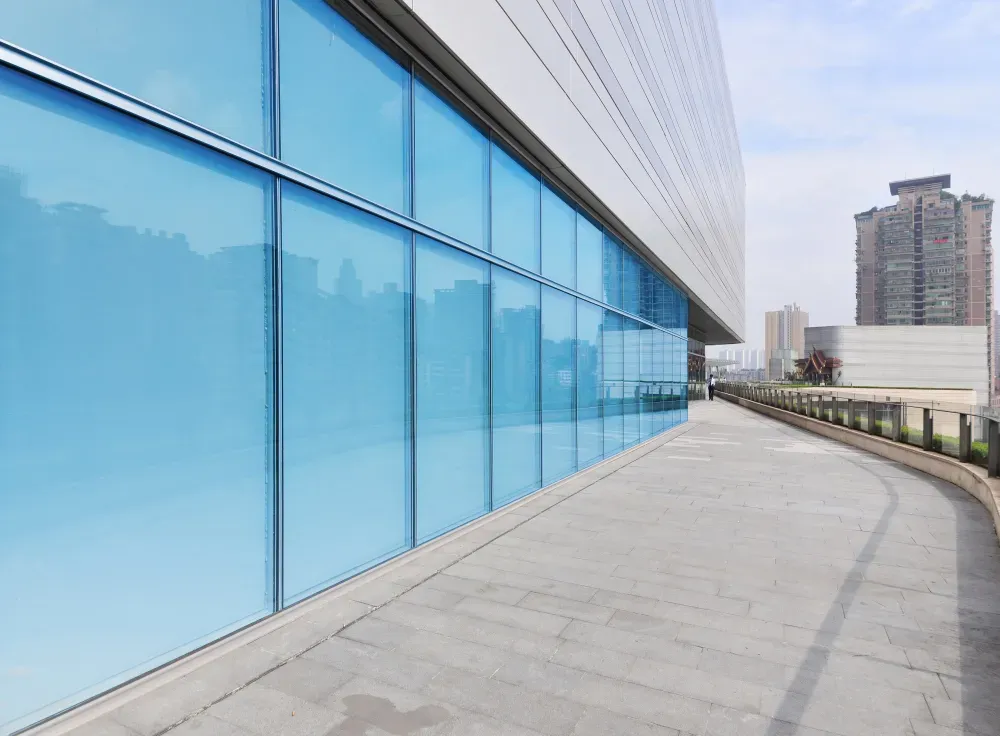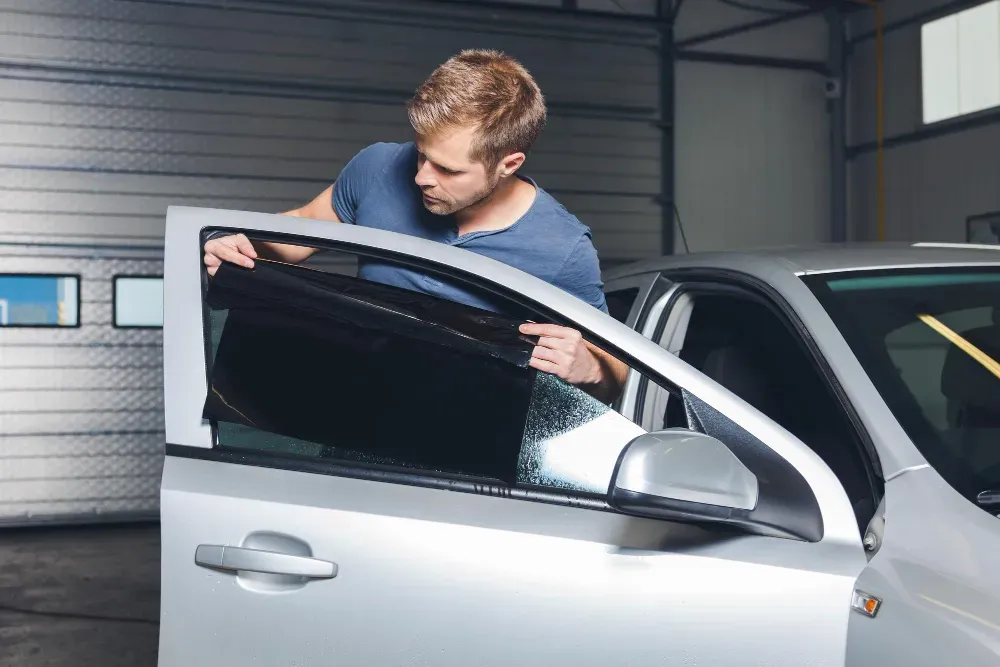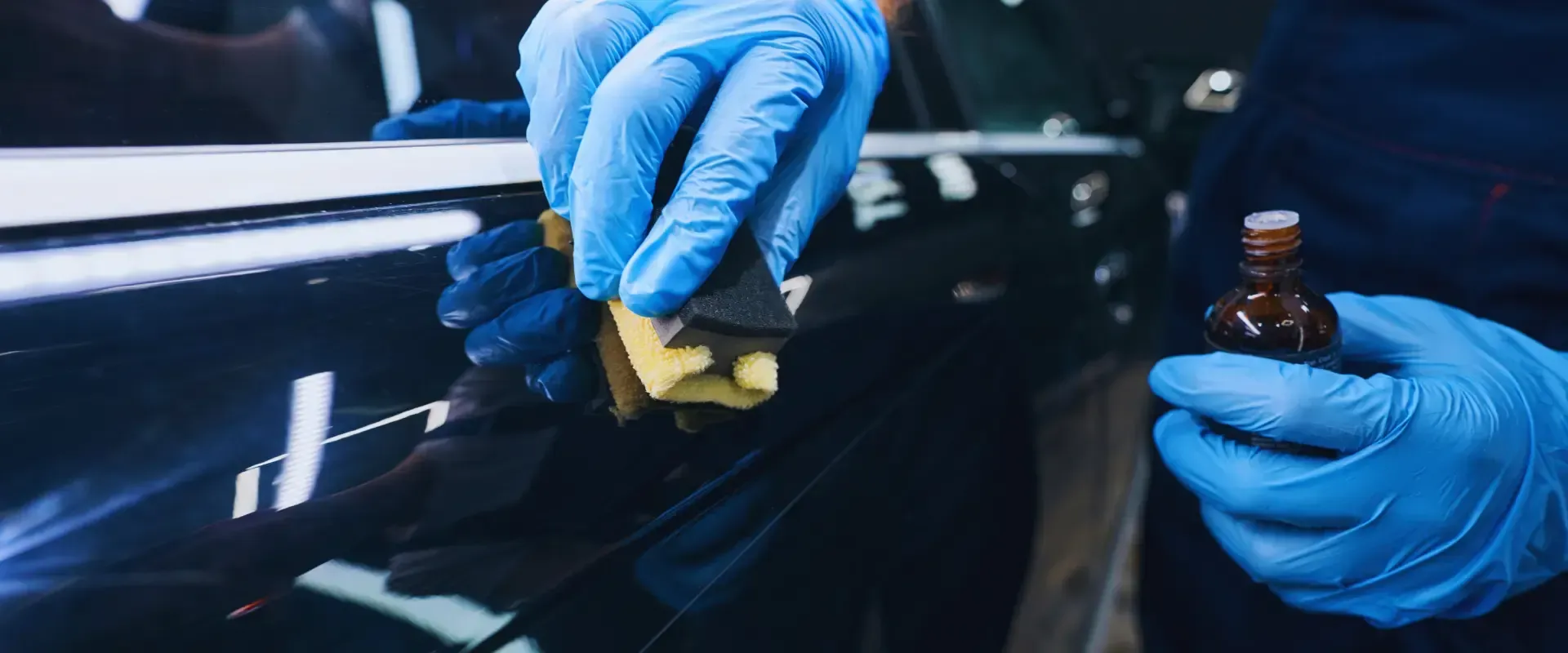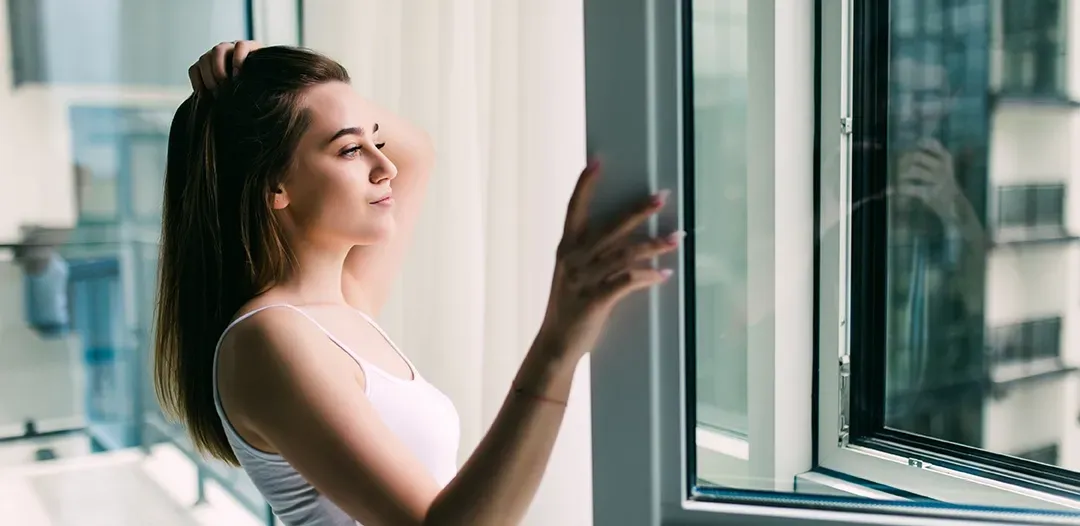7 Surprising Benefits of Nano Carbon Window Tint: A Cudahy Driver's Secret Weapon
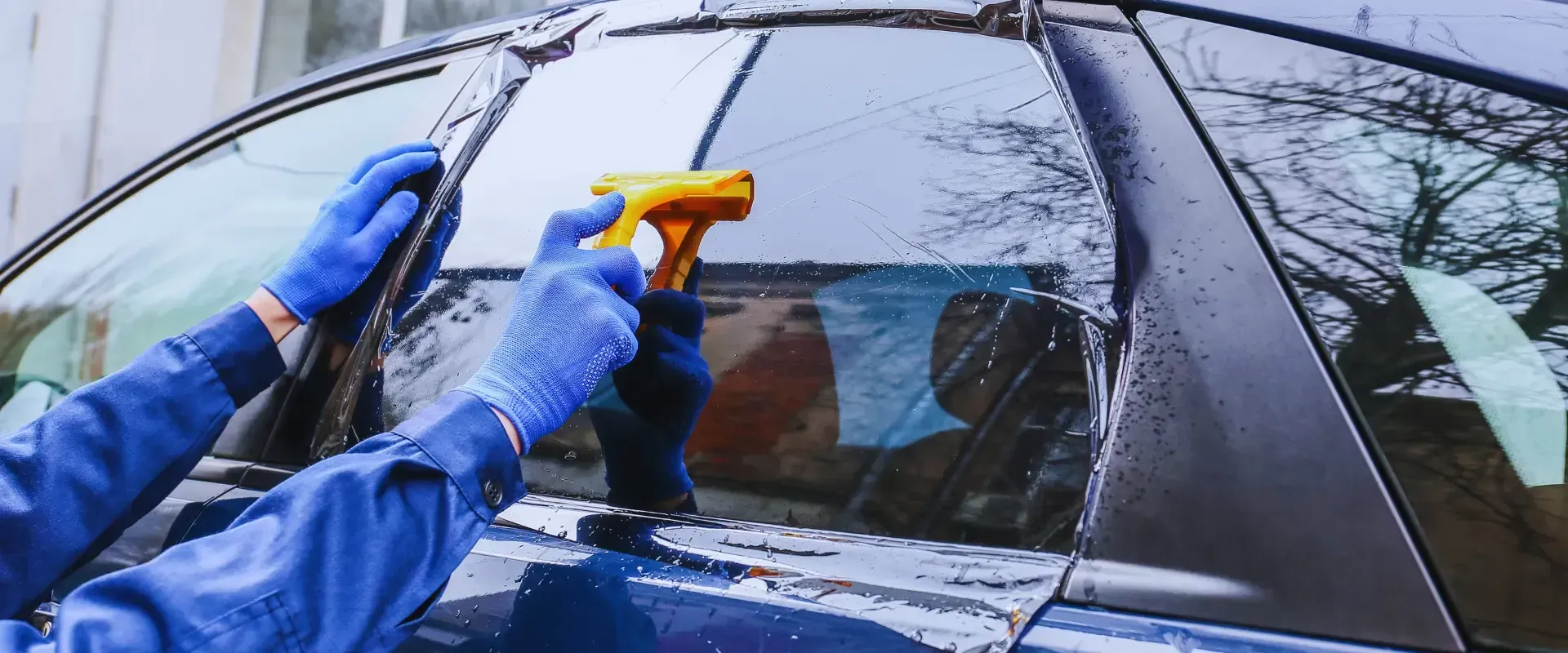
My Journey to Discovering Nano Carbon Window Tint
That Scorching Summer Day That Changed Everything
It was an August afternoon in Cudahy when I returned to my parked car after a three-hour shopping trip. As I opened the door, a wave of heat hit me that felt like opening an industrial furnace. The steering wheel was untouchable, my leather seats were scorching, and the air inside was stifling. My old, basic tint had clearly failed me.
That day, I decided enough was enough. My car needed better protection, and I needed to find a solution that would work in our intense Southern California climate. Little did I know this frustrating experience would lead me to discover nano carbon window tint.
Why Traditional Tints Weren't Cutting It
Before switching to nano carbon, I had tried conventional dyed window films. While they looked good initially, I noticed several problems within the first year:
- They began fading and turning purple
- The heat reduction was minimal at best
- My cell phone reception became spotty inside the car
- The interior still felt hot after parking in the sun
These issues sent me researching better options, which is when I first learned about the advanced technology in nano carbon tints.
What Is Nano Carbon Window Tint?
The Science Behind C2 Nano Carbon Technology
Nano carbon window tint isn't just a fancy name—it represents a significant technological advancement in window films. Unlike traditional dyed tints, C2 Nano Carbon incorporates microscopic carbon particles throughout the film. These particles are so small they're measured in nanometers (hence the "nano" in the name).
These carbon particles have unique properties that make them excellent for blocking heat. They absorb and disperse solar energy rather than simply trying to reflect it like metallic films. This means they can block infrared heat without using any metal components—a major advantage I'll explain shortly.
The structure of the carbon molecules creates a durable, stable film that isn't prone to color changes or degradation over time, something I've personally confirmed after years of use.
How It Differs From Traditional Window Films
To understand why nano carbon is special, it helps to know how it compares to other window tint options:
Tint Type Heat Rejection Durability Signal Interference Color Stability Dyed Films Low Poor (2-5 years) None Fades to purple Metallic Films High Good Significant Stable Hybrid Films Medium Medium Moderate Moderately stable C2 Nano Carbon High Excellent (10+ years) None No fading Apex Super Ceramic Highest Excellent (Lifetime) None No fading
When I saw this comparison during my research, the decision became much clearer. The nano carbon option offered the best balance of benefits without the drawbacks of metallic films.
Top 7 Hidden Benefits of Nano Carbon Window Tint
1. Superior Heat Rejection Without Signal Interference
One of the most surprising benefits I discovered after installing C2 Nano Carbon tint was how it manages to block heat without affecting my electronic devices. Unlike metallic films that can interfere with cell phones, GPS, and radio signals, nano carbon achieves excellent heat rejection without any metal components.
This means I get all the comfort without the frustration of dropped calls or GPS signal loss—something I dealt with when I briefly tried a metallic film in my previous car.
The Pro Classic Advantage
Within the nano carbon family, Pro Classic stands out for its balanced approach. When I was comparing options at Tint Integrity, the installer showed me how Pro Classic offers:
- 45-55% infrared heat rejection
- Zero signal interference
- A natural, non-reflective appearance
- Excellent clarity while maintaining privacy
These benefits make it perfect for daily drivers who want effective heat reduction without a flashy or overly dark appearance.
2. Fade-Resistant Properties That Last Years
I've now had my nano carbon tint for over four years, and one thing that continues to impress me is its color stability. Unlike my previous tint that started turning an ugly purple within a year, my C2 Nano Carbon tint looks exactly the same as the day it was installed.
This stability comes from the nature of carbon itself—it doesn't react with UV light the way dyes do. This means:
- No color shifting or fading
- Consistent appearance year after year
- No need for replacement due to discoloration
The color stability also means the heat rejection properties remain consistent, unlike dyed films that lose effectiveness as they fade.
3. UV Protection for Your Health and Vehicle Interior
Did you know that regular exposure to UV rays through car windows can contribute to skin aging and increased cancer risk? I didn't until my dermatologist pointed out that the left side of my face was showing more signs of sun damage—the "driver's side effect" that many Americans experience.
Nano carbon window tint blocks over 99% of harmful UV rays, providing protection similar to SPF 1000 sunscreen. This isn't just about comfort—it's about health protection during my daily commutes around Cudahy and beyond.
Beyond personal health, this UV blocking has dramatically slowed the fading of my car's interior. After four years:
- My dashboard remains crack-free
- The leather seats haven't dried out or faded
- The color of my interior fabrics remains vibrant
When I compare this to my previous vehicles without good UV protection, the difference is striking. My last car's interior looked 10 years old after just 5 years of Southern California sun exposure.
How Apex Super Ceramic Takes This Further
For those wanting the ultimate protection, Apex Super Ceramic takes these benefits even further. While the C2 Nano Carbon works wonderfully for me, I recommended Apex Super Ceramic to my sister who has young children. Here's why:
- Enhanced infrared rejection (up to 80%)
- Superior clarity while blocking more heat
- Maximum UV protection (99.9%)
- Better protection for children's sensitive skin
The ceramic nanoparticles in this premium option provide the highest level of protection available, though at a higher price point. For families or those with health concerns, this upgrade might be worth considering.
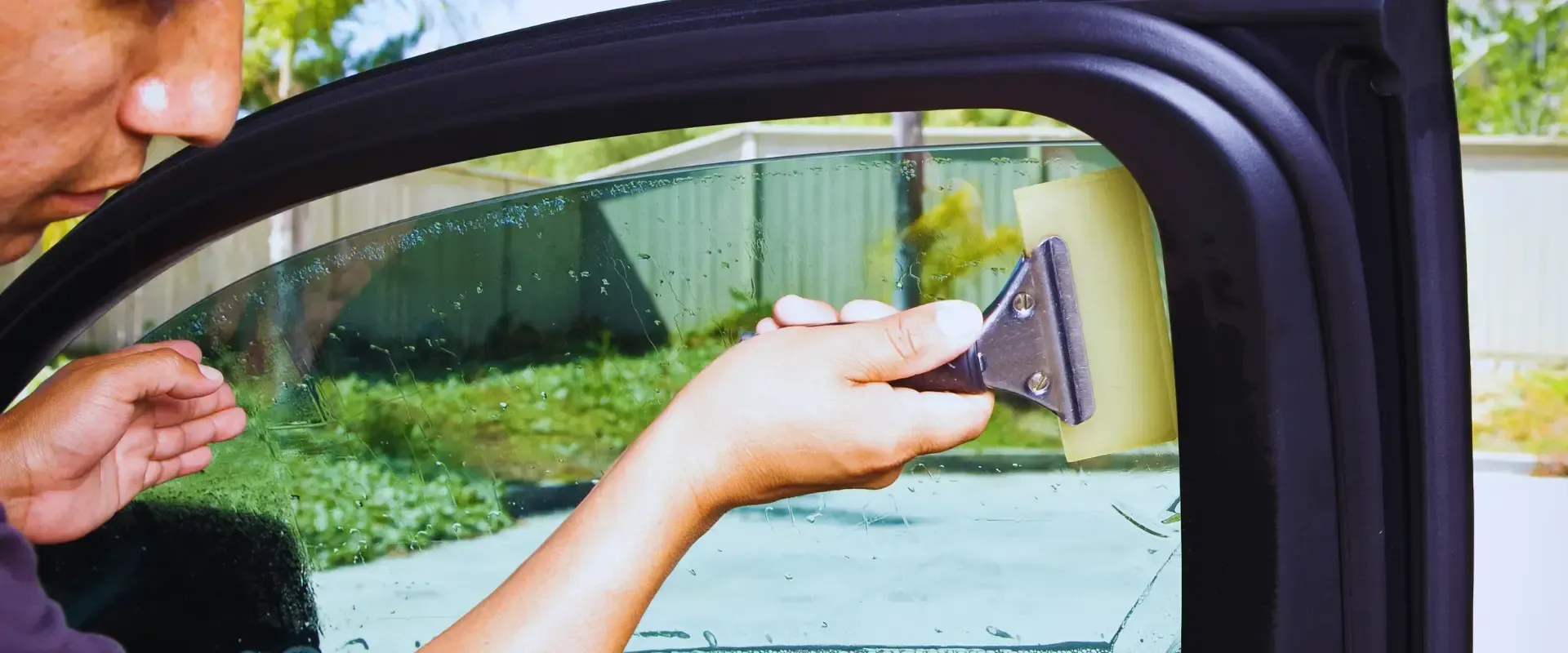
4. Enhanced Privacy and Security
After installing nano carbon tint, I quickly noticed another benefit I hadn't fully anticipated: significantly improved privacy. The non-reflective nature of carbon tint means it provides privacy without the mirror-like appearance of some metallic films.
This increased privacy has practical security benefits too. With my belongings less visible to passersby, I've felt more comfortable leaving items in my car when necessary. The tint makes it difficult for potential thieves to see inside, especially during daylight hours.
"The security aspect alone made the investment worth it. I park on the street in Cudahy, and knowing my car's interior is less visible gives me peace of mind." – My actual thought every time I park in public places
Even with the increased privacy, visibility from inside the car remains excellent, especially at night—something that wasn't true with the darker dyed tint I had previously.
5. Reduced Glare for Safer Driving
One benefit that became immediately apparent during my first post-installation drive was the significant reduction in glare. Whether it's direct sunlight, headlights at night, or reflections from other vehicles, nano carbon tint reduces glare without compromising visibility.
This has made driving more comfortable and, more importantly, safer. I've noticed:
- Less eye strain during long drives
- Better visibility during challenging sunset/sunrise conditions
- Reduced distraction from sudden bright lights
- Clearer vision during rainy conditions when light reflects off wet roads
As someone who commutes daily in varied conditions, this glare reduction has been one of the most immediate quality-of-life improvements.
6. Improved Energy Efficiency
Here's something I didn't expect: my car's air conditioning system doesn't have to work as hard since I installed nano carbon tint. With the interior staying cooler even when parked in the sun, the AC can reach a comfortable temperature much faster and maintain it with less effort.
This has translated to:
- Faster cooling when I first enter the car
- Less strain on the AC system
- Slightly improved fuel efficiency
- Reduced wear on AC components
While it's difficult to measure the exact impact, I've noticed my summer fuel consumption has improved by about 5-7% compared to previous years with the same driving patterns.
7. Shatter Resistance for Added Safety
The final hidden benefit I've come to appreciate is the added shatter resistance that quality window tint provides. While nano carbon tint won't prevent a window from breaking, it does help hold the glass together if it shatters.
This protective film effect can:
- Reduce the risk of flying glass in an accident
- Make it harder for someone to break in quickly
- Provide additional time to react in case of attempted break-ins
This is an aspect of window tint that's rarely discussed but provides real safety benefits beyond comfort and aesthetics.
Installation Process: What to Expect
Professional vs. DIY: My Experience
I'll be completely honest—I initially considered DIY installation to save money. I even watched some tutorials and thought, "How hard could it be?" Fortunately, I reconsidered after hearing horror stories from friends who tried it themselves.
Professional installation of nano carbon tint offers several advantages:
- Precision cutting using computer patterns specific to your vehicle
- Proper preparation of the glass surface
- Expert application without bubbles, wrinkles, or debris
- Proper curing and finishing
- Warranty protection
After seeing the meticulous work that went into my installation at Tint Integrity, I realized I would have never achieved similar results on my own.
The Cudahy, CA Expert Difference
Living in Cudahy, I wanted to work with local experts who understand our specific climate challenges. The team at Tint Integrity took time to explain why certain tint options work better in our area:
- Our intense summer heat requires superior heat rejection
- The year-round sun exposure means UV protection is crucial
- Local regulations regarding tint darkness need to be considered
Their knowledge of both the products and local conditions made a significant difference in helping me choose the right nano carbon option for my specific needs.
Cost vs. Value: Is Nano Carbon Tint Worth It?
Long-Term Savings on Energy and Upholstery
When I first looked into nano carbon tint, I experienced sticker shock compared to basic dyed films. However, after analyzing the long-term value, the decision became clearer:
Real Numbers From My Experience
Here's a breakdown of the value I've received:
- Initial investment: ~$100-150 more than basic tint
- Longevity: 10+ years vs. 3-5 years for basic tint
- Interior protection: Prevented approximately $1,500 in potential upholstery damage
- Energy savings: Roughly $50-75 per year in reduced fuel consumption
- Comfort value: Immeasurable improvement in daily driving experience
When I calculated that I would have needed to replace a basic tint at least once in the same timeframe, the nano carbon option actually worked out to be more economical over the life of my vehicle.
The fact that I won't need to worry about replacing faded, bubbling tint every few years is itself a significant value in terms of both money and hassle avoided.
Common Questions About Nano Carbon Window Tint
Maintenance Tips From My Years of Experience
Caring for nano carbon tint is surprisingly simple, but there are some best practices I've learned:
- Wait at least 3-5 days after installation before washing windows
- Use only ammonia-free cleaners on tinted windows
- Clean with microfiber cloths rather than paper towels
- Avoid abrasive materials that could scratch the film
- Roll windows down completely only after the full curing period (usually 3-7 days)
Following these simple guidelines has helped my tint remain in perfect condition for years.
Troubleshooting Common Issues
While quality nano carbon tint rarely has problems, here are solutions to issues you might encounter:
- Small bubbles after installation: Normal and should disappear within 2-3 weeks as the film cures
- Hazy appearance initially: Also normal during curing; will become clear
- Water droplets between film and glass: Part of the installation process; will evaporate
- Tiny debris visible in the film: May indicate poor installation quality; consult your installer
I experienced small bubbles after my installation, but as promised, they disappeared completely within about 10 days as the film fully adhered to the glass.
Conclusion: Why I'll Never Go Back to Regular Window Tint
After experiencing the benefits of nano carbon window tint firsthand, I can confidently say it's one of the best upgrades I've made to my vehicle. The combination of superior heat rejection, long-term durability, and additional benefits like UV protection and enhanced privacy has transformed my driving experience in Cudahy's challenging climate.
While the initial investment is higher than basic tint options, the long-term value and performance make nano carbon the clear winner for anyone serious about protecting their vehicle and enhancing their driving comfort.
If you're considering window tint for your vehicle, I strongly recommend visiting local experts like those at Tint Integrity who can help you choose between quality options like C2 Nano Carbon and Apex Super Ceramic based on your specific needs and budget.
Key Takeaways:
- Nano carbon tint offers superior heat rejection without interfering with electronic signals
- The color stability ensures it won't fade or turn purple over time
- It provides 99% UV protection, preserving your health and interior
- Professional installation is crucial for optimal results and warranty protection
- The long-term value outweighs the higher initial cost compared to basic tint options
FAQs About Nano Carbon Window Tint
Q: How long does nano carbon window tint last?
A: Quality nano carbon window tint like C2 Nano Carbon typically lasts 10+ years without fading or degrading, compared to 3-5 years for standard dyed films.
Q: Will nano carbon tint interfere with my cell phone or GPS signal?
A: No, unlike metallic films, nano carbon tint contains no metal components and will not interfere with electronic signals of any kind.
Q: How long should I wait before rolling down my windows after installation?
A: I was advised to wait at least 3-5 days before rolling down windows, though this can vary based on weather conditions. Your installer should provide specific guidelines.
Q: Is nano carbon tint legal in Cudahy, CA?
A: Yes, but there are restrictions on how dark tint can be on certain windows. In California, front side windows must allow more than 70% of light in. A professional installer can ensure your tint meets local regulations.
Q: Can nano carbon tint be removed if needed?
A: Yes, professional removal is possible without damaging the glass. However, the tint itself cannot be reused after removal.
Q: How does nano carbon compare to ceramic tint options?
A: Ceramic options like Apex Super Ceramic offer enhanced heat rejection and may perform better in extreme conditions, but come at a higher price point. Nano carbon provides excellent performance for most drivers at a more accessible price.
Q: How soon will I notice a difference after installation?
A: The difference in heat rejection is immediate, even before the tint fully cures. I noticed my car was significantly cooler the very next day after installation.
